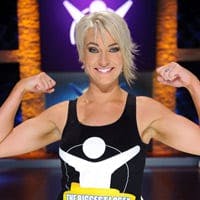The extreme dieters on TV hit The Biggest Loser aren’t the only winners this week with Australia’s fitness industry cashing in on our addiction to the reality TV weight loss phenomenon.
According to business information analysts IBISWorld, the Biggest Loser has become an ongoing advertisement for fitness products and services, normalising the use of personal trainers and extending the reach of these services beyond fitness fanatics to capture a bigger share of the mainstream market.
“This year Australia’s fitness sector will earn revenue of $1.77 billion, representing growth of 3% per annum over the past five years, which is pretty solid considering the economic downturn which occurred during the same period,” explained IBISWorld General Manager (Australia), Robert Bryant.
Whilst the economic downturn saw industry revenue fall by 2% in 2008-09 and 1.4% last financial year, the industry has come through the crisis relatively unscathed. Australians are increasingly viewing fitness spending as a necessary expense, and this factor will aid the industry’s 4% revenue rebound in 2010-11.
Looking ahead, Bryant predicted average annual growth would climb to 5%, making the industry worth around $2.25 billion by 2016.
“Chains such as Fitness First and Genesis have been cashing in on the current interest in fitness facilities by expanding through a series of acquisitions and new outlet openings in a wider range of locations. This has the effect of consolidating their branding and boosting market awareness in an industry which is still in the growth phase of its life cycle,” he added.
Rising health awareness, particularly among older age groups, has broadened the target market for fitness service providers who continue to promote the benefits of improving fitness to increase quality of life in later years.
Bryant also said the continuing trend of people outsourcing household and daily activities is helping drive growth for the fitness sector as rising disposable incomes and the growth of a culture of time-poor professionals bring fitness into the same category as cleaning, gardening and child care – a necessary activity to be scheduled and paid for.
“Fitness is increasingly falling into the DIFM category – do-it-for-me – with more customers seeking professional advice and instruction in the form of personal training services to ensure they receive the maximum fitness benefit for their training effort, and to tie a personal commitment to exercise as a form of further motivation.” Bryant said the personal training segment has grown rapidly over the last five years, to reach $530 million in 2010-11.
The industry is also attracting new clients by expanding its offering through new group fitness classes such as the hugely popular dance style Zumba classes, and outdoor boot camps.
“This in part represents an attempt by gyms to stave off competition from boot camp operators, which have provided an alternative to the traditional gym model. Similarly, gyms are offering personal training services to prevent their members from taking their business elsewhere by signing up with independent personal trainers.”
And, with obesity levels still rising, IBISWorld believes spending on fitness activity will continue to increase, forecasting fitness industry growth will rise at an average 4.9% per annum to reach $2.2 billion by 2015-16.
“Over 2010-11, the proportion of Australia’s adult population (aged 18+) that are classified as obese is expected to reach 24%, an increase of 0.8% from the previous year. And despite rising health consciousness, this is expected to increase to 27.5% by 2015-16 – driven primarily by the ageing population and longer-term societal changes, such as increasingly sedentary lifestyles; pressure to work longer hours; and the easy availability and convenience of energy dense, nutrient poor (EDNP) foods.”

